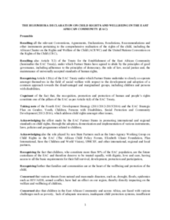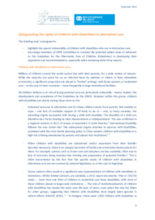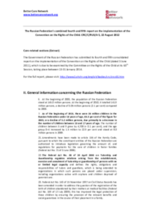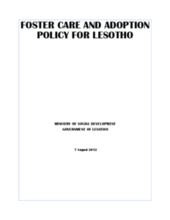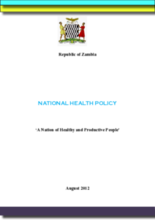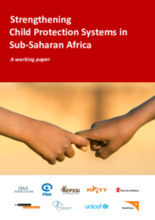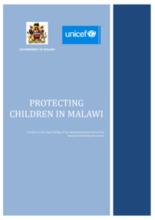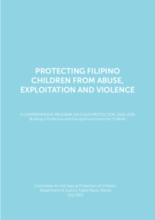Displaying 1301 - 1310 of 1759
This Declaration on Child Rights and Wellbeing was adopted by the Partner States of the East African Community (EAC) in Bujumbura on 3rd September 2012 during the First EAC Child Rights Conference under the theme, “Addressing the issues that negatively impact on the realisation of child rights in the EAC.”
This briefing note, produced by an Interagency Working Group on children without parental care, was designed to highlight the special vulnerability of children with disabilities who are in alternative care and to encourage members of the Convention on the Rights of Persons with Disabilities (CRPD) Committee to consider the potential added value of reference to the Guidelines for the Alternative Care of Children.
Care related sections of the Government of the Russian Federation's fourth and fifth combined report on the implementation of the Convention on the Rights of the Child (dated 3rd June 2011).
This article focuses on a central problem of foster care, which is that it is often not developmentally informed.
A document containing the policy for foster care and adoption in Lesotho.
This document outlines an overarching National Health Policy for Zambia.
This paper is a response to the increasing need for agreement on approaches and documented evidence of good practices consistent with system strengthening work. The purpose of the Inter-Agency Working Paper is to consolidate current thinking, examples and lessons learned about child protection system strengthening in sub-Saharan Africa and suggest a way forward.
This document contains the Procedures and Practice Guidelines for Foster Care and Adoption in Lesotho.
This mapping and assessment report of Malawi’s Child Protection System offers key recommendations to strengthen the child protection system, including enforcing legislation, coordinating mechanisms, building capacity of the social service workforce, harmonization of child protection services, and strengthening accountability mechanisms.
This is a revision and update of the Comprehensive Program on Child Protection (CPCP). Now on its 3rd cycle covering the period 2012-2016, the CPCP provides the overall thrusts, directions, goals, strategies and interventions in the care and protection of Filipino children who are at risk, disadvantaged and vulnerable to various forms of abuse, neglect, violence and exploitation.

